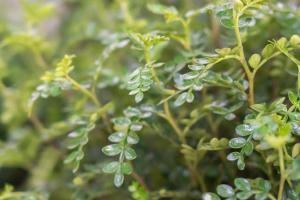Can I Use Top Soil for Potted Plants?
As a plant lover, you always want to give the best care to your plants, and choosing the right soil is crucial for their well-being. Potted plants are a great way to bring nature indoors, but many people wonder if they can use topsoil for their potted plants. In this article, we'll dive into the pros and cons of using topsoil for potted plants.
What is Topsoil?
Topsoil is the top layer of soil that covers the ground, and it's full of organic matter that makes it an ideal soil for plants. It's typically around 5-12 inches deep and contains nutrients, minerals, and microorganisms that plants need to thrive. Topsoil can be found in bags at nurseries or home improvement stores, or you can buy it in bulk if you need a large amount.
Pros of Using Topsoil for Potted Plants
The main advantage of using topsoil for potted plants is that it's nutrient-rich and has a good balance of organic matter, minerals and microorganisms. This means your plants will have access to all the nutrients they need to grow strong and healthy. Topsoil is also very affordable and readily available, making it an attractive option for many gardeners.
Cons of Using Topsoil for Potted Plants
While topsoil may be full of nutrients, it also has a few drawbacks when it comes to potted plants. First, topsoil can be too dense and heavy, making it difficult for water to penetrate and roots to grow. This can lead to root rot and other plant diseases. Additionally, topsoil may contain weed seeds, pests, or diseases that can harm your plants.
Alternative Soils for Potted Plants
If you choose not to use topsoil for your potted plants, there are many alternative soils you can use. Potting soil is a popular option that's specifically designed for potted plants. It's lighter and fluffier than topsoil and has added nutrients, minerals, and water-retaining materials. Another option is cactus soil, which is perfect for succulents and other plants that require well-draining soil. Coco coir is also becoming a popular choice for potted plants, as it's environmentally friendly and sustainable.
Conclusion
While topsoil may be full of nutrients, it's not the best option for potted plants. Its density and weight make it challenging for plants to grow, and it may contain weed seeds, pests or diseases. Instead, consider using a potting mix, cactus soil, or coco coir for your potted plants. These specialized soils are designed to provide the necessary nutrients, moisture, and drainage that potted plants need to thrive. With a little research and the right soil, your plants will bloom and flourish, enriching your home and your life.

 how many times do yo...
how many times do yo... how many planted tre...
how many planted tre... how many pine trees ...
how many pine trees ... how many pecan trees...
how many pecan trees... how many plants comp...
how many plants comp... how many plants can ...
how many plants can ... how many plants and ...
how many plants and ... how many pepper plan...
how many pepper plan...
































